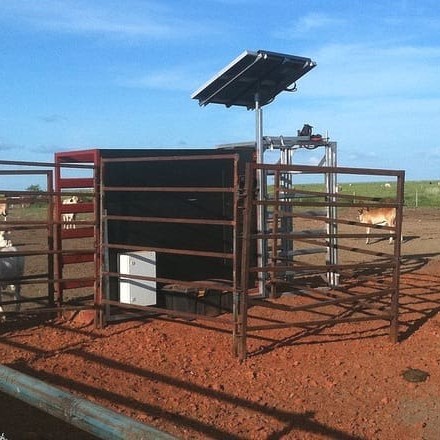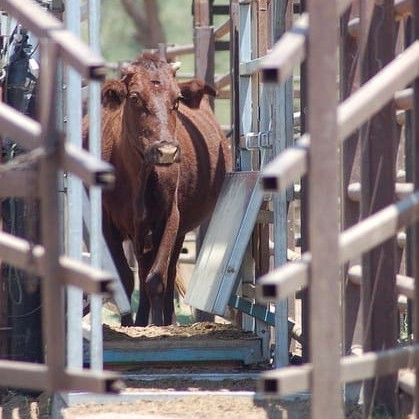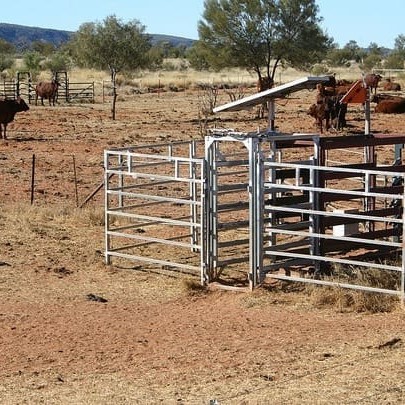 AN Australian technology company says it is close to commercialising the world’s first fully-automated system for mustering and managing cattle in extensive production areas.
AN Australian technology company says it is close to commercialising the world’s first fully-automated system for mustering and managing cattle in extensive production areas.
Alice Springs-based Precision Pastoral Pty Ltd has developed the Remote Livestock Management System (RLMS), which it claims in a press release issued this morning can save beef producers $68 a head in annual cattle operational costs and help them ensure their businesses have a strong economic future.
The Australian Government has announced it will provide a $350,000 grant to help Precision Pastoral to develop, demonstrate and take its automated management system to the Australian and world markets.
“We’re talking about a technology with potential to revolutionise the way livestock are managed across the world’s arid and semi-arid rangelands,” Mark Ashley, acting managing director of Ninti One Pty Ltd, said in the release, issued by the CRC for Remote Economic Participation.
“It introduces to beef producers the same sort of precision available to dairy and beef farmers on smaller, more intensive properties – enabling them to muster, weigh, monitor, draft and hold cattle run on large-scale extensive operations for market over large distances,” he said.
“It saves time, money, labour and capital by using smart remote technology. It can potentially transform the economics and sustainability of extensive grazing in Australia – but also in places like the grasslands of Asia, the Americas and Africa.”
 The RLMS is a combination of hardware and software that uses telemetry to identify, weigh and draft individual animals when they drink from a watering point, explained Tim Driver, the chief executive of Precision Pastoral Pty Ltd, which manufactures the Remote Livestock Management System.
The RLMS is a combination of hardware and software that uses telemetry to identify, weigh and draft individual animals when they drink from a watering point, explained Tim Driver, the chief executive of Precision Pastoral Pty Ltd, which manufactures the Remote Livestock Management System.
“Cattle are trained to present themselves to the RLMS for recording, then return to the paddock – unless they are ready for market, in which case a drafting gate sends them to a holding paddock to await collection by the stock transporter,” Mr Driver said.
The system uses solar power to run RFID tag readers, which recognise the unique electronic tag in each animal’s ear when it passes through a gateway. The animal is then automatically weighed and drafted.
“The whole process is overseen by sophisticated software that has been trialled in real-life conditions on Australian cattle stations over the past three years,” Mr Driver said.
“This enables producers to monitor individual cattle whenever they drink and carry out a range of management actions such as mustering, drafting, monitoring calving rates and fertility, controlling access to feed supplements, and tracking animal growth rates to determine optimum sale times.”
The current prototype RLMS is undergoing field trials and research projects with producers throughout remote Australia. Even in the harsh conditions, the system has achieved a 92 percent up-time and a 99pc drafting accuracy. In weight tracking tests, it recorded cattle weights with 97pc accuracy – arguably better humans could achieve, today’s release claimed.
“No other product on the market comes close to providing this level of integration and data analysis,” Mr Driver said.
 Mr Ashley said the RLMS did more than help cattlemen to monitor and muster cattle ‘hands-off’ and save money.
Mr Ashley said the RLMS did more than help cattlemen to monitor and muster cattle ‘hands-off’ and save money.
“Potentially it is part of an even more sophisticated system that helps producers precisely match grazing pressure to the available pasture, as reported by satellite monitoring.”
“This can help reduce the massive worldwide problem of rangeland degradation by making grazing systems much more sustainable, retaining good cover of native grasses and vegetation – and also locking more carbon.
“Rangelands occupy 40 percent of the Earth’s land surface – they are the largest area of managed land on the planet, but so far humanity has not managed them that well.”
“Precision grazing systems will improve the management of both the rangelands and their animals – as well as preserving the pastoral livelihoods of millions of people. This represents a profound contribution by Australian science and technology to a more sustainable world.”
- Precision Pastoral PL is an IP licensing joint venture company between Ninti One and CAWD Engineering Pty Ltd. The company has operated since 2009 to develop products and licensable IP for remote livestock management.
- NintiOne Ltd was established by the Federal Government in 2003 to conduct research, training and research application in remote Australia. It also manages intellectual property from its research and administers the CRC for Remote Economic Participation.



HAVE YOUR SAY